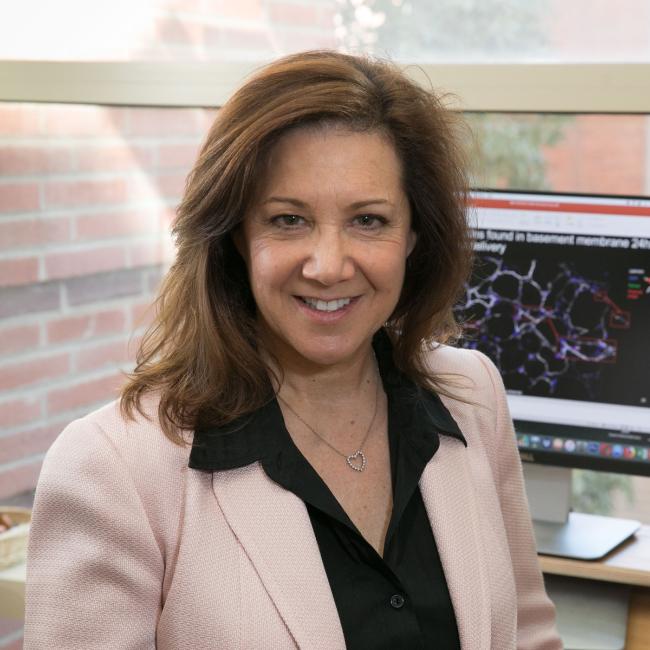
UCLA research could be first step toward healing the hearts of children with Duchenne
After a progressive weakening of the muscles takes away their motor skills, and then their abilities to stand and walk, most males with Duchenne muscular dystrophy die of heart and respiratory failure in their 20s.
Now, researchers at the David Geffen School of Medicine at UCLA are pursuing a cutting-edge way to stop heart disease in patients with Duchenne, which affects one in 5,000 male babies born in the United States. Their work, which is supported by a David Geffen School of Medicine Seed Grant, is just one of a number of projects underway at the medical school in which interdisciplinary groups of UCLA researchers are pursuing new treatments and cures.
The scientists are trying to use minuscule nanoparticles to carry bits of DNA to the hearts of people with Duchenne. Inside heart cells, this new DNA would “trick” the cells’ machinery to reverse the genetic defect. The team is made up of Huan Meng, an assistant professor of nanomedicine; April Pyle, an associate professor of microbiology, immunology and molecular genetics; and Melissa Spencer, a professor of neurology.
“Duchenne is such a complicated genetic disease,” Spencer said. “However, because we know the defective gene, recent advances let us directly edit the abnormal gene in muscle and heart cells in vivo.”
The complex work is possible because it draws on the researchers’ varied areas of expertise: Meng’s experience designing drug delivery systems using the latest technology and Pyle’s and Spencer’s clinical knowledge.
“I don’t think one single investigator can fulfill the job; it requires expertise from different angles,” Spencer said.
Duchenne is caused by a mutation in a gene called dystrophin, which is found on humans’ X chromosome. Because females have two copies of the X chromosome, they are usually only carriers of the disease. But because males only have one X chromosome, boys who inherit the mutation will develop the disease. Symptoms usually appear by age 5.
Recently, researchers have turned to a DNA-editing technique called CRISPR/Cas9 to try to cure Duchenne and other genetic diseases that are caused by mutations in a single gene. (CRISPR stands for clustered regularly interspaced short palindromic repeats.) The technique is a new way for scientists to precisely edit genes. It could, for example, allow a mutated gene, such as the dysfunctional gene that causes Duchenne, to be replaced with a healthy version.
“Gene editing provides a potential solution, because the moment you correct that sick gene mutation site, you have a chance to rescue the patient,” Meng said.
Although the technique has worked successfully in isolated cells in the lab, scientists have yet to develop a version of CRISPR/Cas9 that’s safe and effective in humans. With more than 650 muscles in the human body, delivering a gene therapy to every muscle is one major challenge; in addition, scientists have typically used viruses to deliver the gene-editing program to human cells, but that method can have unwanted side effects.
To try to overcome those challenges, Meng, Pyle and Spencer are designing a nanoparticle out of a polymer-based compound. The tiny particle contains the CRISPR/Cas9 machinery on its inside, with molecules that guide the sphere to the heart surrounding it.
So far, they have begun to develop a library of nanoparticle candidates and are studying their stability, other chemical properties, and how effectively they release the CRISPR/Cas9 system into heart cells.
“Eventually, we can optimize and maybe even redesign the particles that have promise,” Meng said.
From there, they will test the approach in animals with versions of Duchenne.
“This is exciting because there are very few options for safely and effectively targeting the heart in patients with Duchenne,” Pyle said.
Another team science award for the cardiovascular research theme was presented to a group led by nephrologist Dr. Susanne Nicholas that is studying the link between chronic kidney disease and cardiovascular disease. The scientists have identified a small number of molecules that are involved in the development of both kidney disease and atherosclerosis — the narrowing and hardening of the blood vessels that contributes to cardiovascular disease.


